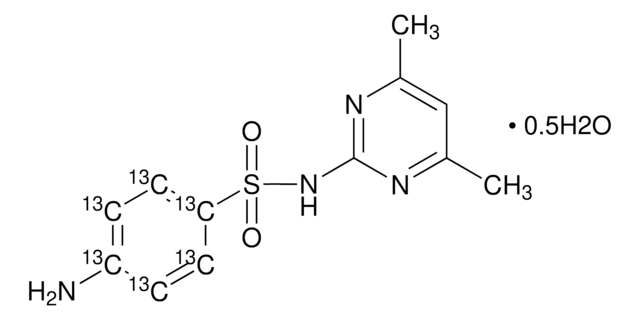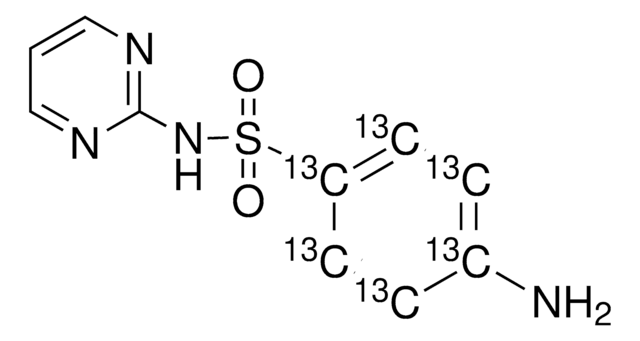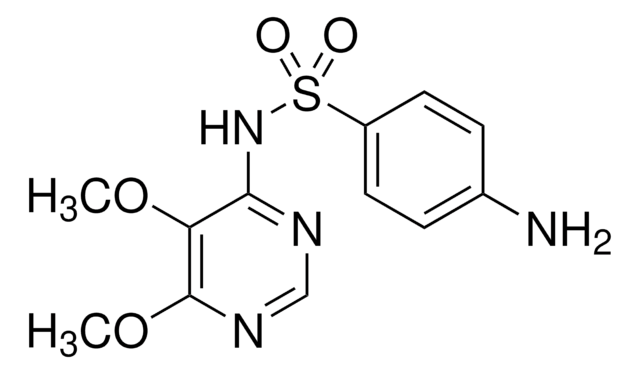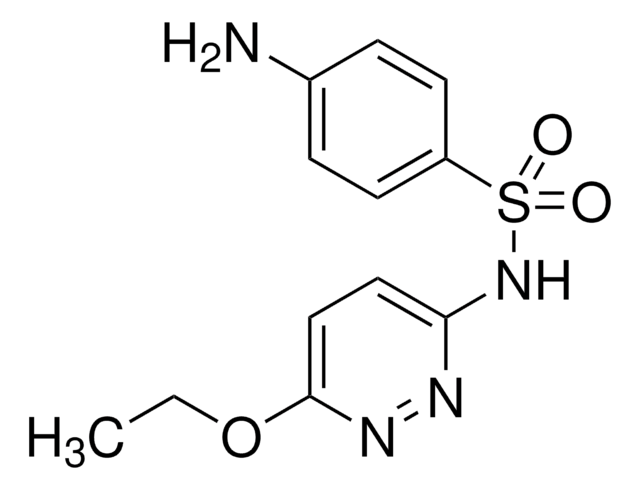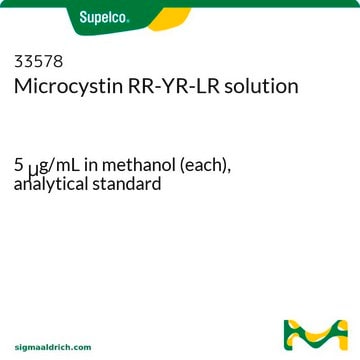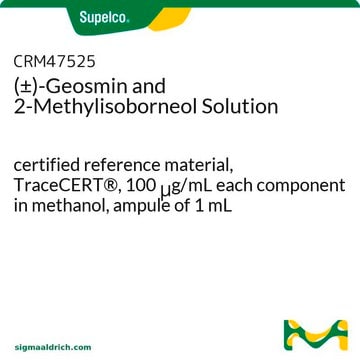32996
Sulfadimethoxine-d6
VETRANAL®, analytical standard
About This Item
Produits recommandés
Qualité
analytical standard
Niveau de qualité
Gamme de produits
VETRANAL®
Durée de conservation
limited shelf life, expiry date on the label
Technique(s)
HPLC: suitable
gas chromatography (GC): suitable
Application(s)
clinical testing
Format
neat
Changement de masse
M+6
Chaîne SMILES
[2H]C([2H])([2H])Oc1cc(NS(=O)(=O)c2ccc(N)cc2)nc(OC([2H])([2H])[2H])n1
InChI
1S/C12H14N4O4S/c1-19-11-7-10(14-12(15-11)20-2)16-21(17,18)9-5-3-8(13)4-6-9/h3-7H,13H2,1-2H3,(H,14,15,16)/i1D3,2D3
Clé InChI
ZZORFUFYDOWNEF-WFGJKAKNSA-N
Description générale
Application
- Wastewater samples by ultra-performance liquid chromatography-triple quadrupole-linear ion trap mass spectrometer (UPLC-QqLit-MS).
- Fish samples as well as soil, sludge and manure samples by LC with tandem mass spectrometry (MS/MS).
Informations légales
Produit(s) apparenté(s)
Mention d'avertissement
Warning
Mentions de danger
Conseils de prudence
Classification des risques
Eye Irrit. 2 - Skin Irrit. 2 - Skin Sens. 1 - STOT SE 3
Organes cibles
Respiratory system
Code de la classe de stockage
11 - Combustible Solids
Classe de danger pour l'eau (WGK)
WGK 3
Équipement de protection individuelle
dust mask type N95 (US), Eyeshields, Faceshields, Gloves
Choose from one of the most recent versions:
Déjà en possession de ce produit ?
Retrouvez la documentation relative aux produits que vous avez récemment achetés dans la Bibliothèque de documents.
Les clients ont également consulté
Notre équipe de scientifiques dispose d'une expérience dans tous les secteurs de la recherche, notamment en sciences de la vie, science des matériaux, synthèse chimique, chromatographie, analyse et dans de nombreux autres domaines..
Contacter notre Service technique